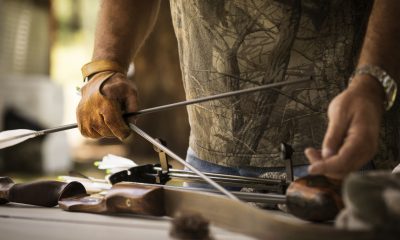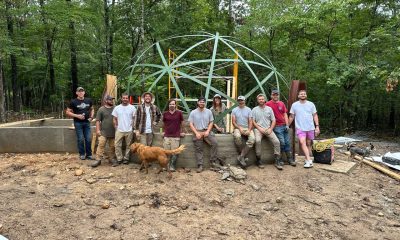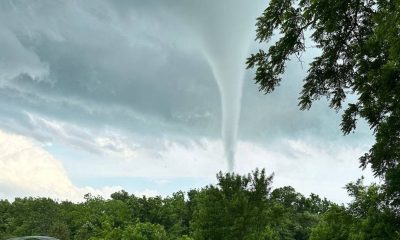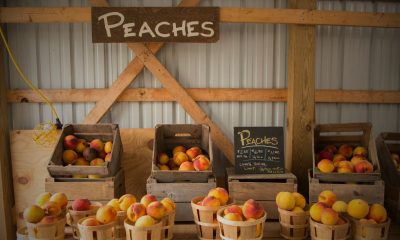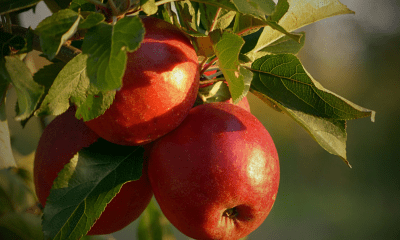Lifestyle
The Hunt for Mushrooms is On!
A great introduction to wild mushrooms by Woodworking Gunny Bear.
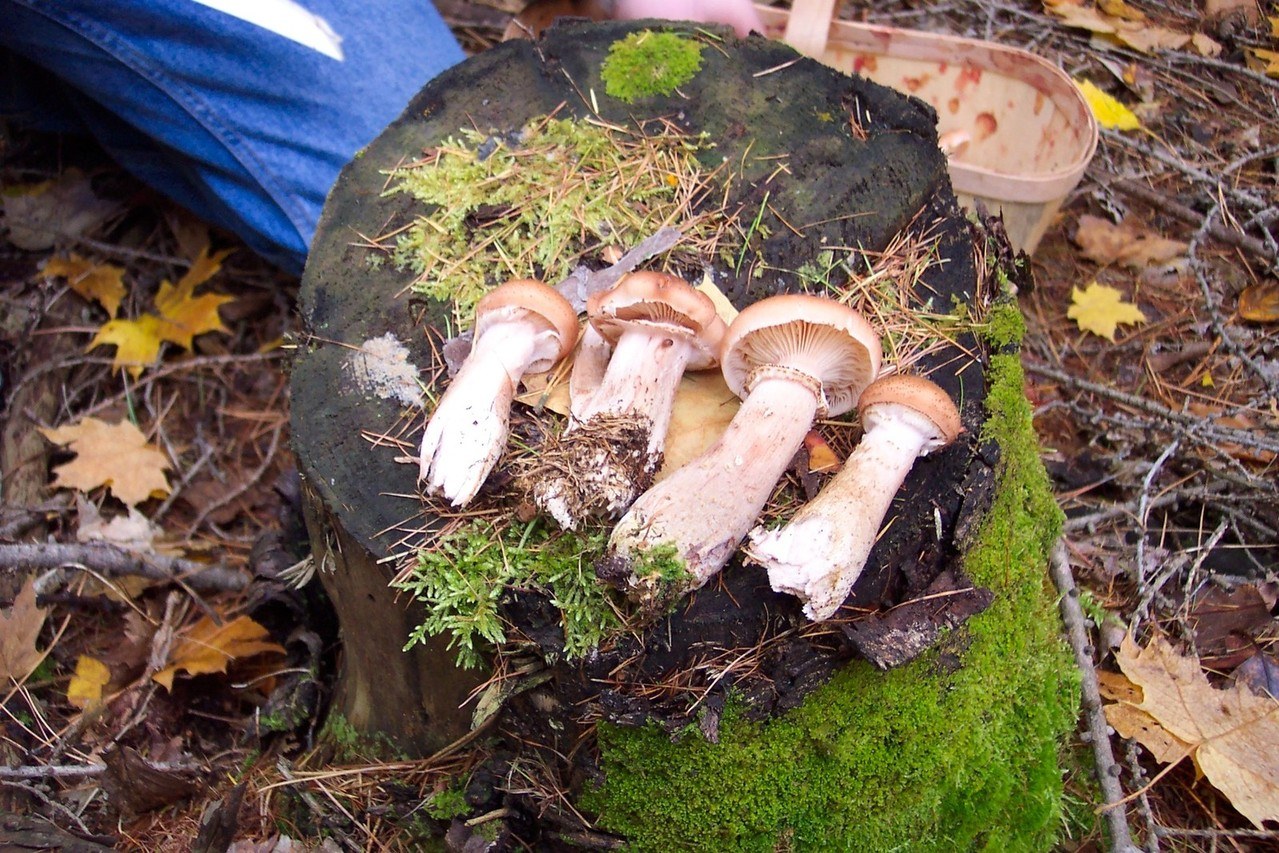
Time to Stock Up On Natural Forage For Winter, or Earn Some Extra Babylonian Magic Squares At Your Local Farmer’s Market
Fall is here, and for many Beartarians, that means hunting season and time to finish canning all of those wonderful things that have been growing in our gardens all season long. In our little slice of Beartaria, Fall also means long walks in the woods “hunting” the wide variety of delicious (and bountiful) wild mushrooms. Last year, we bagged over 60 lbs. of Chanterelles alone, not to mention several huge finds of Chicken and Hen of the Woods, and a myriad of other tasty treats. The proven health benefits and sheer amount of freely growing sustenance means that wild mushrooms should be on the Fall menu of all Bears throughout Greater Beartaria.
Whenever entering a conversation on finding, identifying, and eating wild mushrooms, the obligatory disclaimer must be made. I am not a mycologist, just a bear who loves to hunt and eat wild mushrooms.
Some wild mushrooms are absolutely toxic and the utmost care should be taken in order to accurately identify each mushroom prior to eating.
Also, most wild mushrooms should be cooked thoroughly, and eaten in small amounts initially to ensure that allergies are not present. OK, now that I have performed the necessary CYA statements, I will tell you that hunting and eating wild mushrooms is not anywhere near as daunting as a Bear might think. People have been consuming mushrooms since nearly the beginning of (linear) time and with a few hard and fast “rules”, even your bear cubs will be fully capable of collecting wild fungi safely.
Let me gently ladle up some general safety gravy on the “rules”.
I use quotes around the word rules for good reason. As you gain experience, skill, and confidence in your fungi foraging capabilities, many of the rules will fall to the wayside. Sayings such as, “If it stains blue, it’s not for you…” and many others seem ridiculous, once you identify and eat a pan full of indigo milky mushrooms. They are completely blue, literally bleed a deep blue and are delicious and safe, with few/no real lookalikes.
The one mushroom hunting colloquium that I do still keep in my mental rolodex is, “There are old mushroom hunters, and there are bold mushroom hunters, but there are NO old, bold mushroom hunters.” When I was first bitten by the wild mushroom bug, I simply consulted my local field guide from the Missouri Department of Conservation and started hunting. This is an excellent way to start, as it gets you out in the woods without weeks of hand wringing about possible poisoning. The rules that stick with me still are the following:
1) Identify the truly dangerous species, such as destroying angel, deadly gallerina, jack-o-lanterns, little brown mushrooms, etc. and avoid anything you find that even resembles these mushrooms. The ones I named account for over 90% of fatal mushroom poisoning in North America, so avoiding them and their lookalikes starts you off on pretty solid ground. The majority of other non-edible mushrooms will cause vomiting, stomach upset or bowel issues. While not deadly, it is still a solid plan to identify and steer clear of those mushrooms as well.
2) Start off with a handful of easily identifiable mushrooms with no toxic lookalikes. This is why morel hunting is so popular. They are very easy to identify, and their lookalikes are easily found when cut in half vertically.
3) Collect any unidentified specimens in a separate container, to more accurately identify at home.
4) Never throw caution to the wind and eat something that has not been verified. I refer you back to the quote above regarding the lack of old, bold mushroom hunters.
5) Consult field guides, identification websites, instructional videos, and books prior to heading out to the woods, and then again when looking your harvest over, once home.
If your biscuits are still dry and you want to cook up some of your own Fall Mushroom Gravy, read on!
Now, keep in mind that my piece of Beartaria is in central Missouri, so the mushrooms my family and I often find may be different from those popping up this time of year in your neck of the woods. However, unless your local environment is completely devoid of water, decaying wood, or shade, you should be able to rustle up some wild grub.
One of the first wild mushrooms that I properly identified and ate was a Hedgehog Mushroom. They are easily identified by the tiny, icicle-like spines on the underside of their cap (where most shrooms keep their gills) and they have no lookalikes in Missouri. I memorized the traits of several different species and was extremely excited to find these little gems among a handful of what I hoped (and was not disappointed) were Golden Chanterelles. Chanterelles are smooth or ridged under their cap, which these appeared to be. I wasn’t sure until later that day, with a few photo references (never use illustrations) and other identification methods, that they were truly Chanterelles. While looking up additional info, I discovered that they can also fetch up to 20 dollars a pound at local markets – insert hand rubbing here-. Now, my whole Bear Clan confidently pluck up pounds of both Hedgehogs, and Chanterelles throughout the Fall.
Another easily identifiable Fall mushroom is the sulphurous Chicken of the Woods. Chickens are great, and really do resemble chicken in texture. Their great taste is only exceeded by their size! I have found Chicken of the Woods fruitings of up to 20 lbs., and have heard stories of people finding over 80 lbs. in one spot. That is a lot of mushroom. They are blaze orange and yellow, growing in shelves on decaying wood, and have small pores on their underside. Nothing else in our woods resembles them. Their counterpart, the Pale Chicken of the Woods have a few lookalikes such as Berkeley’s and Black Staining Polypore, both of which are edible, so no harm no foul. These things are solid meat and can be fried, grilled, dried, pickled, or prepared just about any way you cook meat or vegetables. We love fried and grilled the best.
While Spring and Summer are key seasons for gardening, Fall is actually the season with the widest abundance of wild mushrooms. With Milk Caps, Chanterelles, Chicken and Hen of the Woods, Hedgehogs, and a wide array of other wild fungi popping up all over the country, it is the perfect time for Bears to hit the woods and grab a bunch of this free, delicious, and nutrition packed chow. Onward!!!
Written By: Woodworking Gunny Bear
-Woodworking Gunny Bear is a 43 year old, 21 Rogan tall, retired Marine Gunnery Sergeant. He and his family settled in Texas County, Missouri after his time in the Corps. They focus their time on homesteading, animal husbandry, and their woodworking business: OrigamiHandmadeGifts on Etsy. They maintain a homestead populated with horses, goats, meat rabbits, a bull (the heifer did not survive the winter), pigs, and a wide array of fowl.-

Social media shows doomsayers, pessimists, and even truther-prepper types blasting out warnings of impending doom and gloom. You may feel the urge to fight if you can bear this without your emotions causing you to flee or freeze.
But what does fighting for your future mean? Unfortunately, much internet commentary directs your focus to what others are doing and how they affect you, calling for action to demand change. While this may have its place, it neglects the freedom we already possess and can inadvertently bypass our authority and control.
Here are a few simple things to think about that can help you fight against the future you don’t want, by building the future you do want.
Financial Future
Securing your financial stability is the cornerstone of building a successful future. This starts with becoming debt-free. Debt is a shackle that limits your freedom and ties you to a system you might not align with. Aim to clear your debts quickly and avoid taking on new ones.
Next, focus on land ownership. Owning land provides a place to call home and offers opportunities for self-sufficiency, such as gardening, raising livestock, or even setting up a small business. This autonomy can buffer against economic uncertainties and offer a sense of security.
Continually work towards a sustainable income. Whether through traditional employment, investments, freelancing, or entrepreneurial ventures, ensure your income sources are diversified and resilient to economic shifts. Build skills that are in demand and can be adapted to various roles. Financial independence is crucial in crafting a future you control rather than one external force dictates.
Education
Education is the foundation of personal and professional growth. Embrace self-study and continuous learning. The more skills and knowledge you acquire, the more adaptable you become in a rapidly changing world. Invest in personal improvement by setting aside time for reading, courses, and practical skill-building.
Homeschooling is another powerful tool. It allows you to tailor education to your family’s needs and values, ensuring your children learn what truly matters. Foster a love of learning in your household, emphasizing critical thinking, creativity, and practical skills over rote memorization.
Family Protection
Protecting your family goes beyond physical safety; it involves being a guiding force and a source of stability. We must also protect our families from negative and misguided influences. Be a leader to your children by setting a positive example. Teach them resilience, self-reliance, and the importance of moral values. Strengthen bonds with your siblings through support and cooperation, creating a solid familial network.
Honoring your seniors is equally essential. They possess invaluable wisdom and experience. Encourage intergenerational communication and respect, ensuring your family’s heritage and lessons are passed down.
Mindset
Your mindset is the driving force behind every action. Take ownership of your life and decisions, understanding that responsibility and accountability are keys to freedom. Respect your time and finances, recognizing them as finite resources that require careful management.
Develop a mindset of resilience and adaptability. Life is unpredictable, and being mentally prepared for challenges ensures you can face them head-on. Cultivate a positive outlook, focusing on solutions rather than problems. This proactive attitude will guide you in building the life you want.
Community Building
No one succeeds alone. Connect with people who share your values and vision. Building a community of like-minded individuals offers support, shared resources, and collective wisdom. Engage in activities and friendships that bring joy and complement your life.
We would like to take it a step further by saying, we don’t build the future we want as a reaction to the future we don’t want. We build, because we love, its fun and fulfilling. Our fight is to thrive, not to survive. Survival is a consequence of thriving. So aim high! Take control of your life, embrace self-responsibility, and connect with others on the same path.
Those looking to connect with a broader network should consider joining our Community app. It’s a platform dedicated to bringing together individuals who strive for independence. Whether you’re looking for advice, collaboration, or simply companionship on your journey, our thriving community is a valuable resource.
The power to shape your future is in your hands.
Lifestyle
Making Pine Needle Soda: A Fantastic Foraged Beverage
Pine needle soda, a truly one-of-a-kind beverage, has been savored worldwide for its zesty taste and health benefits.

Pine needle soda, a truly one-of-a-kind beverage, has been savored worldwide for its zesty taste and health benefits. It’s not just a refreshing drink, but also a creative use of natural ingredients. Here’s a simple guide to crafting this unique soda at home.
Pine needles are rich in antioxidants and vitamin C, which help boost the immune system. Different species of needles can offer different flavors, but it’s important to make sure the trees you harvest from are not toxic. Avoid using needles from yew, Norfolk Island pine, or Ponderosa pine. You should do additional research to insure you are staying safe.
The recipe I followed is easy and only requires a jar, strainer, and measuring cups. Start by identifying the pine tree you would like to harvest from; I used fir, tamarack, and white pine. Again, make sure you don’t use anything unsafe. You can choose to use new sprouted tips or even mature needles, which means you can also have fresh pine soda in the winter months!
You can scale up the recipe, but for reference, use the following:
- 2 Cups Pine needles
- 2 Cups Water
- 2-4 Tablespoons sugar (depending on sweetness you desire)
For the above measurements, I recommend using a quart jar. Begin by rinsing the needles, not too thoroughly, because the carbonation comes from natural yeast living on the pine needles. Add the sugar and water and seal the jar. Leave to ferment so it can become bubbly soda! Make sure to “burp” the jar every couple of days to release some of the gas so it does not build up and explode the jar! In 5-7 days, you will have soda, God willing.
Serve over ice and with some citrus if you’d like. Enjoy!
Lifestyle
Reconnect and Rejoice: Beartaria Times Weekly Challenge
Maintaining solid relationships with family and friends offers numerous benefits that enrich our lives in meaningful ways…

In our fast-paced world, losing touch with friends and family members who once played significant roles in our lives is easy. This week, the Beartaria Times invites you to participate in our heartwarming challenge: Reconnect with someone you haven’t spoken to in a while. Give them a call, ask how they’ve been, and rekindle that bond.
Maintaining solid relationships with family and friends offers numerous benefits that enrich our lives in meaningful ways:
1. Emotional Support: Close relationships provide a robust support system during tough times, offering comfort, advice, and a sense of belonging.
2. Improved Mental Health: Regular interactions with loved ones reduces feelings of loneliness and depression, contributing to mental well-being.
3. Increased Longevity: Studies have shown that strong social connections tend to help people live longer and enjoy better health.
4. Enhanced Happiness: Sharing moments, memories, and experiences with others brings joy and fulfillment, fostering a more positive outlook on life.
5. Personal Growth: Friends and family often challenge us to grow, learn, and become better versions of ourselves.
6. Creating Memories: Every interaction creates new memories, adding richness to our personal histories and offering stories to cherish for years to come.
We encourage you to take this challenge to heart and reach out to someone you miss. Whether it’s a friend from high school, a distant relative, or a former colleague, a simple phone call can reignite connections and brighten your day and theirs.
Once you’ve reconnected, share your stories and experiences on the Beartaria Times community app. Post about who you called, the memories you shared, and how the conversation went. Did you learn something new? Did you laugh about old times? These stories can inspire others to take similar steps in their lives.
Join us in this week’s challenge and celebrate the beauty of human connection. Let’s make an effort to nurture our relationships and remind those we care about that they are valued and remembered.
Happy connecting, Beartarians! We look forward to hearing your heartwarming stories.
Sincerly,
– The Beartaria Times Team
-

 Just Crushing2 weeks ago
Just Crushing2 weeks agoChristopher Gardner Completes First Dome Framing Project in Missouri: Exclusive Interview
-

 Just Crushing2 months ago
Just Crushing2 months agoBeartaria Ozark Campground Launches Community Forum!
-

 Just Crushing2 months ago
Just Crushing2 months agoMap it! – Discover Beartarians Living, Working, and Crushing Near You!
-

 Just Crushing2 months ago
Just Crushing2 months agoWhy Do We Feel So Free?
-

 Lifestyle2 months ago
Lifestyle2 months agoReconnect and Rejoice: Beartaria Times Weekly Challenge
-

 Reports2 months ago
Reports2 months agoReport: EF-1 Tornado Touches Down In The Ozarks
-

 Business2 months ago
Business2 months ago3000 Members In Our Business Group!: This Week On Our Community App!
-

 Wellness2 months ago
Wellness2 months agoBeartaria Times Member Shares History and Benefits of Haymaker’s Punch

